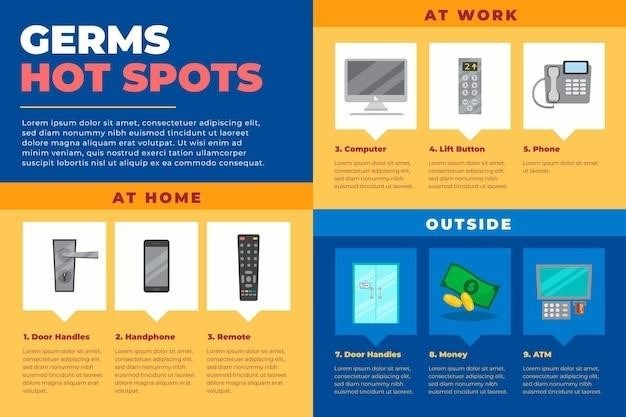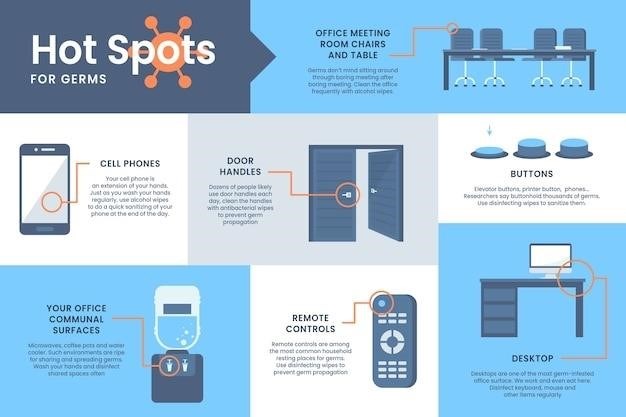Bradley Smoker Manual⁚ A Comprehensive Guide
This manual provides a complete guide to using your Bradley Smoker, covering setup, operation, maintenance, and troubleshooting. Learn about hot and cold smoking, roasting techniques, and using Bradley Bisquettes for optimal flavor. Discover recipes and safety precautions for delicious results.
The Bradley Smoker is an innovative, insulated electric smoker designed for consistent, clean smoke generation. Unlike traditional smokers, the Bradley utilizes a unique automated bisquette feeding system, eliminating the need for constant monitoring and adjustments. This ensures a steady flow of smoke, resulting in perfectly smoked meats, poultry, and fish every time. Its user-friendly design makes it suitable for both novice and experienced smokers. The Bradley’s compact size and portability makes it an ideal addition to any backyard or patio, allowing you to enjoy delicious smoked food with minimal effort. It’s also versatile, capable of hot smoking, cold smoking, and even roasting, providing a wide range of culinary possibilities. The Bradley Smoker is more than just a smoker; it’s a culinary tool designed to elevate your outdoor cooking experience; Its ease of use, combined with its consistent results, makes it a valuable addition to any home chef’s arsenal. The automated system eliminates the guesswork and inconsistencies associated with traditional methods, allowing you to focus on the creative aspects of smoking and achieving perfect results. This makes it an excellent choice for those new to smoking, as well as experienced users who value efficiency and convenience. The insulated design helps maintain consistent temperatures, leading to improved cooking times and superior results.
Key Features and Benefits of Bradley Smokers
Bradley smokers stand out due to their innovative design and features. The automated bisquette feeding system is a key advantage, providing a consistent smoke flow without manual intervention. This eliminates the need for constant monitoring and ensures even cooking. The insulated design maintains stable temperatures, leading to efficient cooking times and superior results. The digital controls allow for precise temperature regulation, vital for achieving different smoking styles. The versatile design accommodates various cooking methods, including hot and cold smoking and roasting. Multiple rack capacities cater to diverse cooking needs, allowing for large batches of food. Cleaning is simplified with readily accessible components. The Bradley smoker produces cleaner smoke compared to traditional methods, resulting in healthier and more flavorful food. The compact and portable design makes it suitable for various outdoor settings. Its durable construction ensures longevity and reliable performance. A wide range of accessories are available to enhance functionality and versatility. The overall user experience is improved by the ease of use and minimal maintenance requirements. Bradley smokers are known for their consistent, high-quality results, making them a worthwhile investment for both beginners and experienced smokers alike. The superior smoke quality translates to a more refined and enjoyable culinary experience. Bradley’s commitment to quality is evident in the craftsmanship and performance of their smokers, ensuring long-lasting satisfaction. The comprehensive user manuals and readily available customer support further enhance the overall ownership experience.
Setting Up Your Bradley Smoker⁚ A Step-by-Step Guide
Before commencing, carefully review the provided assembly instructions. Ensure the smoker is placed on a stable, level surface capable of supporting its weight, away from flammable materials and under a covered area if possible. Unpack all components, verifying their completeness against the parts list. Connect the power cord to a grounded electrical outlet; never overload the circuit. Install the water pan correctly, ensuring proper placement to prevent spills. Position the racks evenly within the smoker chamber; avoid overcrowding to ensure proper airflow. Load the bisquette feeder with the desired type and quantity of bisquettes. Familiarize yourself with the digital control panel; understand the functions of each button and display. Set the desired temperature according to your chosen recipe; allow the smoker to preheat to the target temperature. Preheat time will vary depending on the ambient temperature and the desired cooking temperature. Check the water level frequently during operation to maintain adequate moisture levels inside the chamber. Once preheated, carefully place the food items on the racks, leaving enough space for even cooking. Note that the loading order might depend on the type and size of the food items being cooked. Close the smoker door securely, ensuring a tight seal to maintain consistent temperature and smoke levels. Monitor the cooking process, referring to the recommended times and temperatures provided in your recipe or user manual. Remember that the cooking time might be influenced by various factors such as food size and ambient temperature. Always adhere to safety precautions to avoid burns or other injuries. Regular monitoring throughout the cooking process is crucial for optimal results and food safety.
Operating Instructions⁚ Hot Smoking, Cold Smoking, and Roasting
Hot Smoking⁚ For hot smoking, typically done at temperatures between 225°F and 275°F (107°C and 135°C), use the digital control panel to set your desired temperature. This method is ideal for achieving a smoky flavor and tenderizing meats like brisket or pork shoulder. Ensure sufficient water in the water pan to maintain moisture and prevent the food from drying out. Adjust the bisquette feed rate as needed to maintain a consistent smoke level; you may need to experiment to find the optimal rate for your food and desired smoke intensity. Cooking times will vary depending on the size and type of food.

Cold Smoking⁚ Cold smoking requires lower temperatures, generally below 80°F (27°C). This method is best for preserving and adding a subtle smoky flavor to foods like cheeses or fish. You may need to use an external thermometer to monitor the temperature precisely since the Bradley smoker may not be accurate at these temperatures. A lower bisquette feed rate is crucial, and you might need to adjust the smoker’s ventilation. Cold smoking takes significantly longer than hot smoking; patience is key.
Roasting⁚ The Bradley Smoker can also be used for roasting, offering a unique smoky twist to traditional roasting methods. Set the temperature to your desired roasting temperature—typically higher than hot smoking temperatures—and monitor the internal temperature of the food using a meat thermometer to ensure it reaches food safety standards. Use a roasting rack to allow for even heat circulation. Roasting times will vary according to the type and size of the food being roasted. Remember to always follow food safety guidelines.
Maintaining Your Bradley Smoker⁚ Cleaning and Troubleshooting

Regular cleaning is essential for optimal performance and longevity of your Bradley Smoker. After each use, allow the smoker to cool completely before cleaning. Remove the racks, drip pan, and water pan. Wash these components with warm, soapy water and a non-abrasive sponge or brush. Avoid harsh chemicals or abrasive cleaners. Rinse thoroughly and allow to air dry completely before storing. Wipe down the interior of the smoker with a damp cloth to remove any food residue or grease buildup. For more thorough cleaning, you can use a smoker-specific cleaner following the manufacturer’s instructions.
Troubleshooting common issues⁚ If your Bradley Smoker isn’t producing smoke, check the bisquette supply and ensure the auger is functioning correctly. If the temperature isn’t holding steady, verify the thermostat settings and check for any obstructions in the airflow. If the smoker isn’t heating properly, ensure it’s properly plugged in and the heating element is functioning. If you encounter persistent problems, consult the detailed troubleshooting section in your Bradley Smoker’s user manual or contact Bradley customer support. Addressing minor issues promptly can prevent larger problems and maintain the efficiency of your smoker. Remember to always unplug the smoker before cleaning or performing any maintenance.
Understanding Bradley Bisquettes and Their Uses
Bradley Bisquettes are the heart of the Bradley Smoker’s clean and consistent smoke generation. These compressed wood pellets are designed to burn slowly and efficiently, producing a clean, flavorful smoke without the need for messy wood chips or charcoal. Each bisquette burns for approximately 30 minutes, providing a continuous stream of smoke for hours of cooking. A variety of wood types are available, each imparting unique flavor profiles to your food. For example, hickory bisquettes provide a robust, smoky taste, while applewood offers a sweeter, milder flavor. Experimenting with different bisquettes allows you to customize the smoky flavor of your dishes. Properly storing bisquettes is important to maintain their quality. Keep them in a cool, dry place in their original packaging to prevent moisture absorption and degradation. When loading bisquettes, ensure they are placed firmly into the auger to ensure proper feeding and prevent jams. Always follow the manufacturer’s instructions for loading and replacing bisquettes, and never overload the hopper.
Recipes and Cooking Techniques for Your Bradley Smoker
The Bradley Smoker opens a world of culinary possibilities beyond simple smoking. Mastering various techniques enhances your cooking experience. Begin with basic recipes for poultry, like perfectly smoked chicken or turkey, focusing on temperature control and smoke infusion. Experiment with different wood bisquettes to achieve unique flavor profiles. For pork, explore slow-smoked ribs or pulled pork, requiring longer cooking times and careful monitoring of internal temperature. The Bradley Smoker excels at smoking larger cuts of meat, ensuring even cooking and tender results. Don’t limit yourself to meats; try smoking fish, vegetables, or even cheeses for surprising flavor combinations. Precise temperature control allows for both hot and cold smoking, expanding your recipe options significantly. Numerous online resources and Bradley’s own website offer detailed recipes and techniques. Remember to always use a meat thermometer to ensure food safety and achieve the desired level of doneness. Explore different brines, marinades, and rubs to customize the flavor of your smoked dishes. With practice and experimentation, you’ll master the art of Bradley smoking, creating unforgettable meals.
Troubleshooting Common Issues with Your Bradley Smoker
Addressing common Bradley Smoker problems ensures smooth operation. If your smoker isn’t producing smoke, check the bisquette supply and ensure the generator is functioning correctly. Examine the bisquette feed mechanism for obstructions. Low smoke output might indicate using damp bisquettes; always store them in a dry place. Uneven cooking can result from improper food placement or air circulation issues. Ensure racks are level and food is arranged for even smoke exposure. Temperature inconsistencies could stem from faulty temperature sensors or environmental factors like wind. Consult your manual for sensor calibration procedures. A malfunctioning digital control panel might require a reset or professional repair. Before contacting customer support, review the troubleshooting section in your manual. Persistent problems, like electrical malfunctions or mechanical failures, should be addressed by a qualified technician or contacting Bradley’s customer service. Regular cleaning and maintenance significantly reduce the likelihood of common issues. Addressing problems promptly prevents escalating issues and ensures continued enjoyment of your Bradley Smoker.
Safety Precautions and Important Warnings
Prioritize safety when using your Bradley Smoker. Always operate the smoker outdoors in a well-ventilated area, away from flammable materials. Never leave the smoker unattended while in operation. Ensure the unit is placed on a stable, level surface capable of supporting its weight when fully loaded. Use caution when handling hot surfaces; always use oven mitts or heat-resistant gloves. Never touch the heating elements or internal components while the smoker is energized. Keep children and pets away from the operating smoker to prevent accidental burns or injury. Regularly inspect the power cord for any signs of damage before each use and replace immediately if necessary. Do not use the smoker if the power cord or plug is damaged. Ensure proper grounding to prevent electrical shocks. Dispose of used bisquettes responsibly, following local regulations. Always unplug the smoker from the power source before cleaning or performing any maintenance. Never immerse the smoker in water or other liquids. Use only genuine Bradley Smoker parts and accessories. Do not attempt repairs unless you possess the appropriate expertise; consult a qualified technician for any complex repairs or issues.






